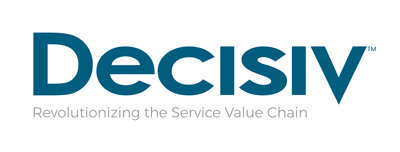Turning Data Into Your Biggest Advantage

Big data is on the minds of the trucking industry’s fleet executives. Having high quality, reliable and consistent data enables you to more quickly identify problems, select the best solutions, and focus on issues with the biggest impact on asset performance.
But it’s not the volume of data you should focus on. More important is having consistently structured data that’s organized and easy to understand and use.
When data is generated, say in the course of a service event, it arrives in an unstructured form. Think of it as writing down a chronological list of events as they occur.
Because each data entry is unique, unstructured data is difficult to use-- it can’t be compared to anything else. You can collect a lot of data from your assets and your operations; but if it has no priority, no history, and no pattern, it has little actionable value.
Structured data, on the other hand, is categorized so you can make connections and comparisons between categories-- “I have fewer total trucks out of service this month than last month” or “service center A is seeing higher throughput this quarter than service center B.” With structured data you see more patterns, allowing you to take action, make improvements, and measure progress.
VMRS, the universal language of maintenance management systems, is a great example of how structured data helps extract more value. With VMRS codes, data is entered in a structured format from the start. Because it is organized, it can help you identify and focus on the most important issues and address areas of concern about your fleet’s equipment and the maintenance operation that supports it.
Structured VMRS-based data can show you the issues you are having in any time period or in any shop, with any technician, or with any vehicle make or model. That information leads to real-time informed decisions about assets and maintenance programs and practices.
Structured data is also increasingly important as fleets begin adopting connected assets. Those Industrial Internet of Things (IIoT) solutions are enabling access to valuable information from on-board telematics systems and are removing the burden of unstructured data and helping reduce data entry needs and errors.
Looking ahead, structured data will become even more critical for moving beyond just the analysis of past events to enabling real-time notifications that can prompt the kind of immediate action that addresses issues and reduces asset downtime before it happens.
Big data may be on your mind but it’s high quality structured data that can actually be used to address problems that impact asset utilization and performance.
That’s why technology vendors like Decisiv are exploring and developing solutions that make it easier for fleets and service providers to capture structured, usable data as well as find more creative, impactful ways to use that information as a competitive advantage.
Curious about how how structured data can help drive value for fleets and service providers? Download our Q&A to learn more.
Decisiv Service Relationship Management (SRM) software is already the choice of major vehicle manufacturers, including Volvo, Mack, Hino, Peterbilt, and Kenworth, as well as their dealers and call centers, service networks and managed maintenance providers, and a growing number of fleet customers. For information, visit www.decisiv.com


